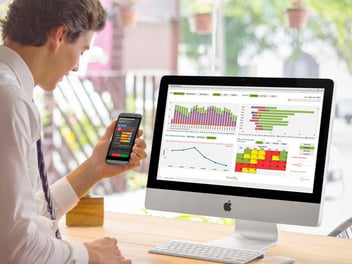Business Intelligence Answers the Questions Revenue Management Asks
Read More
Business Intelligence (BI) is starting to catch on in the hospitality sector, and with good reason – using technology to transform data into actionable information yields big dividends when properly focused on a business need. How about the realm of hotel marketing and closing the gap between campaign design and performance? Arming our hotel marketing departments with current, accurate and detailed information on booking patterns in our hotels and on the performance of promotions goes a long way towards ensuring that they can do their jobs more effectively. Here we look at a few of many possible suggestions on how to best apply hotel business intelligence to the marketing function.
Understand campaign performance in detail
So how did last summer’s promotion fare in our hotel(s)? Beyond the usual simple tally of roomnights and revenue, what we can learn by deeply analyzing the production of a campaign can guide us in the planning of our next one, or even help us tweak a currently running campaign for maximum effectiveness. Business Intelligence provides for the granular analysis that is required to analyze production by: selling channel, room type, geographic origin, length of stay, ancillary spend, lead time, membership program status or any combination of such factors. For instance, which bookings produced the highest net contribution, bringing us the most revenue (highest ancillary spend, premium room categories, longest length of stay) at the lowest acquisition cost (booking through direct channels)? Do these bookings share commonalities such as where the guest resides (geographic origin), how far in advance they book (lead time) or if they are part of our loyalty program (membership status)? Surely a hotel marketer would revel in such detail and be able to apply these learnings to future promotional activities.
Recognize source market lead times and plan accordingly
It stands to reason that a hotel’s mix of business at any given point in time is made up of guests residing in different locations – different states or regions if not different countries. And in its simplest form, the relationship between lead time and geographic source market is such that for any given market segment, guests from farther away tend to book farther in advance (given their need to make travel arrangements, etc.). Yet beyond that simple correlation are a host of social, environmental and cultural factors that have bearing on when your hotel’s potential guests are shopping for a hotel stay.
To ensure maximum return on investment, we should time seasonal campaigns (those promoting a given season or time period) such that promotional activities reach a crescendo in each source market at the peak of their unique booking window. This is an easy and sensible way to stretch marketing budgets – and this differentiation can be achieved through all selling channels, online and offline. Business Intelligence provides the means to definitively know these booking windows in detail, provided of course that the hotel(s) in question have the business processes in place to consistently capture complete and accurate addresses on guest folios.
Monitor booking pace by non-traditional attributes
Another clear use case of hotel Business Intelligence in support of marketing is in the utilization of booking pace analysis to determine need periods. Booking pace is the measure of on-the-books business for a future period, as compared to an equivalent time frame, usually the prior year. While most hotels do already monitor booking pace using some type of manual analysis (for instance, Excel workbooks populated with keypunched data or a PMS data extract), seldom does this analysis venture beyond overall house-level figures or possibly market segment-level detail. The sheer data-intensive nature of the calculation prevents any further granularity in a manual reporting environment.
When Business Intelligence is applied to booking pace, however, some interesting and valuable insight can be gained for hotel marketers. For instance, analyzing booking pace by sales channel can reveal relative declines in volume booked from any one channel (for instance, OTA or the hotel’s web site) – and can expose this in advance while there is still time to impact results for the period in question.
Similarly, close scrutiny of booking pace by room type can reveal when promotional activity should be considered for premium room types such as Suites or Club rooms. And monitoring booking pace by geographic source of origin (related to the point above on understanding the lead time of source markets) can help to gauge the effectiveness of location-specific marketing efforts and/or identify markets where activity is warranted.
Clearly, there are myriad different ways in which Business Intelligence can support hotel marketing. The few examples above could be considered a “jumping off” point for those interested in learning how to apply this powerful technology to marketing their own hotels or hotel brands. As BI becomes more commonplace in the hospitality industry, no doubt we will see more and more hotels and hotel companies create ever-more-sophisticated use cases.





Comments